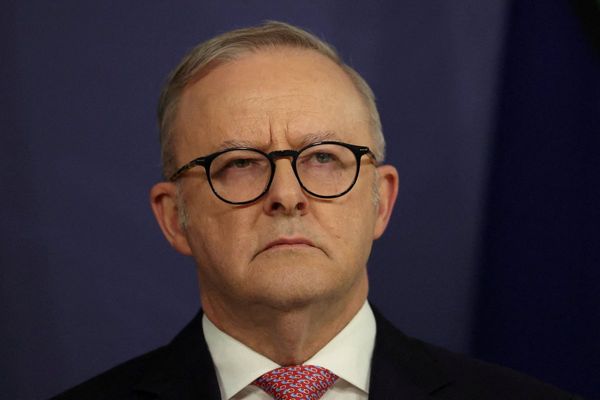Whether you're trying to keep up with runaway rent increases, hoping to break into the market for the first time, or struggling to budget for mortgage repayments, it's clear Australia is in the midst of a housing affordability crisis.
It's no surprise, then, that the issue featured in Treasurer Jim Chalmers's speech as he handed down his second budget to parliament. "For too long, secure, affordable housing has been out of reach for too many Australians," he said.
So is there anything new in Tuesday's budget aimed at relieving some of the pressure? Let's take a look.
Rent assistance cap to increase
First up, there's some immediate good news for more than a million low-income renters.
The maximum rate of the Commonwealth Rent Assistance program will be raised by 15 per cent — or up to $31 a fortnight — from September this year in what the government is calling the largest increase to the program in more than three decades.
The change is expected to cost the government $2.7 billion over five years and $700 million a year after that, on top of the $4.9 billion set aside over the forward estimates to raise the JobSeeker, Austudy and Youth Allowance rates by $40 a fortnight.
Rent assistance is available to people who receive government support payments and also rent their home.
Earlier this year the Productivity Commission's report on government services found almost half of all rent assistance recipients were in rental stress (spending more than 30 per cent of their income on rent).
Chalmers said the government recognised that rents are a "big part of the cost of living pressures that people face", but that the bigger problem was the lack of housing supply.
Push for more social and affordable housing
On the housing supply front, the government has pledged to lift the National Housing Finance and Investment Corporation's (NHFIC) liability cap by $2 billion to $7.5 billion in order to support the building of affordable and social housing.
They say this will allow the agency to provide more low-cost, long-term loans to community housing providers undertaking affordable housing projects. The change is set to take effect from July 1.
The NHFIC was established in 2018 by then assistant treasurer and minister for housing Michael Sukkar.
Tax relief for build-to-rent projects
There are also some new incentives for the private sector to undertake build-to-rent projects.
Build-to-rent housing refers to when a property is held by a single owner and professionally managed. An example of this would be if a developer builds an apartment block but instead of selling the individual units, decides to maintain the ownership and rent them out instead.
For eligible new build-to-rent projects, where construction commences after the release of the budget, the government says it will:
- Increase the rate for the capital works tax deduction (depreciation) to 4 per cent a year.
- Reduce the final withholding tax rate on eligible fund payments from managed investment trust investments from 30 per cent to 15 per cent from 1 July next year.
The changes will only apply to projects consisting of 50 or more dwellings that will be made available for rent to the public, and they must be owned by the same landlord for 10 years before they are able to be sold.
Tenants must also be offered a lease of at least three years for each dwelling.
It's worth noting, however, that the cost of the build-to-rent deduction for the federal government is $10 million in 2025-26 and $20 million in 2026-27, which suggests that the government is not expecting a massive take-up — at least initially.
Changes to the Home Guarantee Scheme
Announced in the lead-up to the budget, the government will soon expand its Home Guarantee Scheme in a bid to counter rising house prices.
Where previously the First Home Guarantee and Regional First Home Guarantee Schemes were restricted to married and de-facto couples or single people, from July 1 this year friends, siblings, and other family members will be able to jointly apply for the schemes.
Non-first-home buyers who have not owned property in a decade or longer will also be permitted to apply, as will permanent residents, in addition to Australian citizens.
Under the schemes, the federal government acts as a guarantor on up to 15 per cent of a loan, which means eligible buyers are able to purchase property with a deposit as low as 5 per cent.
The criteria for the separate Family Home Guarantee scheme will also be expanded to include legal guardians.
A boost for homelessness services
There is also some money in the budget earmarked for services supporting Australians sleeping rough.
The government has pledged an additional $67.5 million for the coming financial year to boost homelessness funding to the states and territories through the National Housing and Homelessness Agreement, which has been extended until June next year.
If you are unable to load the form, click here.







